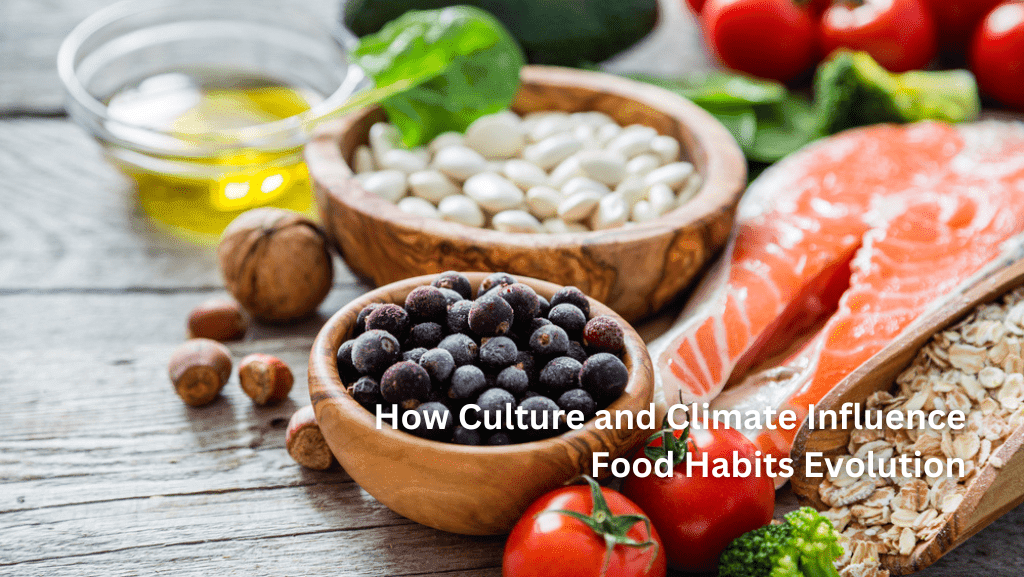Welcome to our article on the fascinating relationship between culture, climate, and food habits. In this piece, we will explore how these influential factors shape the way we eat and how our dietary preferences have evolved over time. Food habits are deeply rooted in culture, and our choices are often influenced by the traditions, beliefs, and social norms of our communities. Additionally, climate plays a significant role in determining what crops can be grown in a particular region and what livestock can thrive in specific conditions. Throughout this article, we will examine how different cultures around the world have developed unique food choices and mealtime practices, shaped by their cultural heritage. We will also delve into the impact of climate on agricultural practices, which subsequently affects food availability and selection. Moreover, we will discuss how communities adapt their food traditions to changing environmental conditions, exploring new ingredients and incorporating foreign influences. We will also explore the global impact of globalization on food culture, as well as the health and sustainability considerations related to the intersection of culture, climate, and food. By understanding the influence of culture and climate on our food habits, we can gain a deeper appreciation for the diversity of culinary traditions worldwide and work towards more sustainable and inclusive food systems. So, let’s embark on this journey to explore the intricate connections between culture, climate, and the evolution of our food habits! Cultural Factors Impacting Food Choices Food choices are deeply influenced by various cultural factors, including traditions, beliefs, social norms, and regional customs. These factors shape the types of ingredients used, cooking methods, and mealtime practices, ultimately defining a culture’s culinary identity. Let’s explore some examples from diverse cultures around the world. Traditions Cultural traditions play a significant role in shaping food choices. In many cultures, specific dishes are associated with festive occasions or religious ceremonies. For example, in India, the festival of Diwali is celebrated with various sweet treats like Gulab Jamun and Jalebi. These traditional dishes hold immense cultural significance and are enjoyed by families for generations. Beliefs and Taboos Beliefs and taboos surrounding food also heavily influence culinary choices. Certain religions and cultural practices dictate dietary restrictions and preferences. For instance, in Islamic culture, the consumption of pork is prohibited, leading to the development of diverse and flavorful alternatives like lamb and chicken dishes. Social Norms Social norms and expectations regarding food play a crucial role in shaping eating habits. In some cultures, communal meals and the act of sharing food are highly valued. For example, the concept of “family-style” dining is prominent in Chinese culture, where multiple dishes are served and shared among family members, emphasizing togetherness and unity. Regional Customs Customs specific to different regions also contribute to the diversity of food choices. Each region has its unique climate, geography, and available ingredients, leading to the development of distinct culinary traditions. For instance, in the Mediterranean region, the abundance of fresh produce, olive oil, and seafood has influenced the healthy and vibrant Mediterranean diet. Understanding the cultural factors that impact food choices allows us to appreciate the richness and diversity of culinary traditions worldwide. These factors shape the way we cook, eat, and share meals, making food an integral part of cultural heritage. Climate’s Influence on Agricultural Practices One of the significant factors that influence food habits and preferences is the climate in which a region is situated. The availability of certain crops, livestock, and farming techniques is directly impacted by the climate conditions of a particular area. As a result, there are distinct regional variations in diets and food preferences around the world. When it comes to agriculture, different climate conditions require specific approaches and adaptation. Let’s explore some examples: Regions with a warm tropical climate often have an abundance of fruits, vegetables, and spices that thrive in the heat and humidity. The flavorful cuisines of countries like Thailand, India, and Jamaica are influenced by the availability of tropical fruits such as mangoes, papayas, and coconuts. In colder climates, where the growing season is short, communities rely on crops that can withstand low temperatures, such as root vegetables and hardy grains. In Scandinavia, for example, potatoes and barley have been staple crops for centuries. In arid regions with limited water resources, farmers have developed innovative irrigation techniques and cultivate drought-resistant crops like millet and sorghum. These crops are commonly consumed in countries such as Ethiopia and Sudan. Coastal regions often have access to an abundance of seafood, which becomes a key component in their cuisines. Countries like Japan, Iceland, and Peru have a rich tradition of seafood-based dishes. By understanding the impact of climate on agricultural practices, we can appreciate how it shapes the food that is cultivated and consumed in different parts of the world. The interplay between culture and climate influence food habits and create the diverse culinary landscapes we see today. Adaptation and Innovation in Food Evolution In this section, we explore the fascinating ways in which culture and climate influence the adaptation and innovation of food evolution. Communities around the world have demonstrated their remarkable ability to adjust their food traditions based on changing environmental conditions and incorporate foreign culinary influences, leading to the creation of unique culinary identities. Adapting to Changing Environmental Conditions One of the remarkable aspects of food evolution is how communities adapt their food habits to suit the prevailing climate. In regions with limited agricultural resources, people have developed ingenious methods to sustain themselves. For example, the Inuit people of the Arctic have traditionally relied on hunting and fishing, utilizing the resources available in their harsh climate. Examples: The Inuit’s consumption of seal blubber and other high-fat foods provides them with the necessary energy to endure the extreme cold. In arid regions, such as the Middle East, irrigation systems have been developed to cultivate crops like dates, olives, and grapes, making effective use of limited water resources. Exploring New Ingredients and Flavors Culture and climate influence food evolution by inspiring individuals





